Review by Peter Duncan

What we read as kids can have huge effect on the rest of our lives. Books and comics can set our prejudices and interests and political views, sometimes, if we are lucky, they can even start us down the road of a career. Julia Round is one of the lucky ones. Her book, Gothic for Girls: Misty and British Comics, exists because of a chance purchase at a jumble sale and one story in old comic that almost literally haunted her for years.
It was a story which terrified her so much that she discarded the comic, and yet, somehow, could never forget it. That, in turn, led to a quest to find the story again which seems to have kick-started her research into gothic fiction in general and its place in British girls’ comics in particular.
Eventually it led to this book.
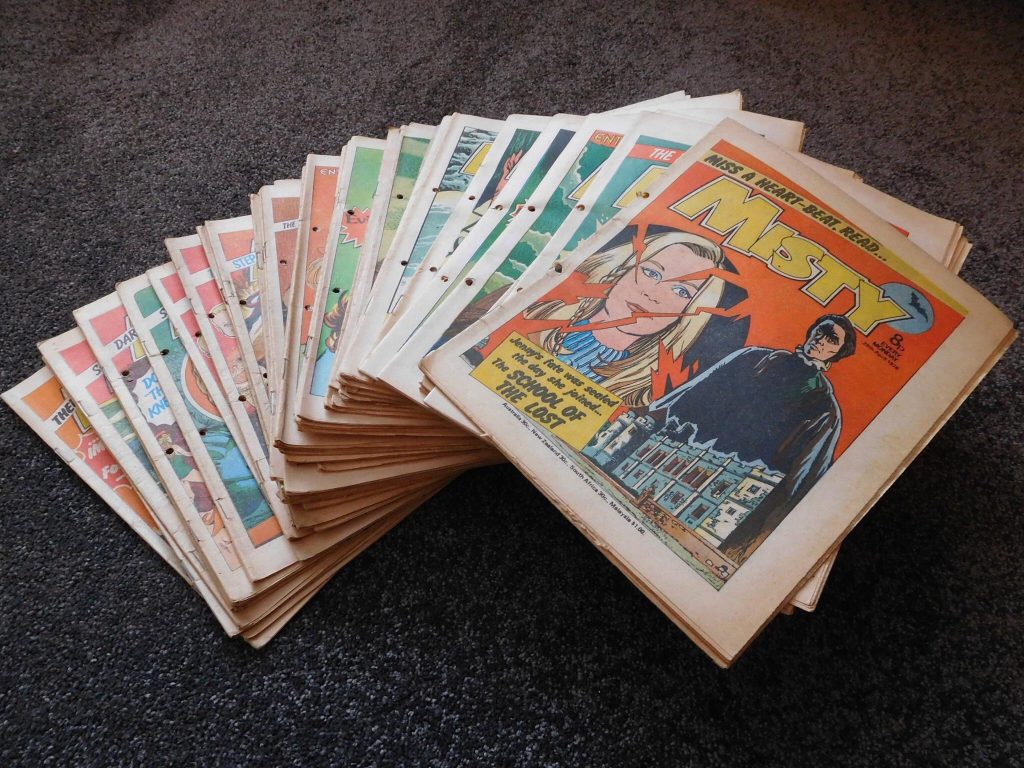
Misty comics, discovered one Glastonbury’s The Comic Store by Julia Round
Misty, which contained the story that so frightened Julia, ran for just 101 issues, starting in Feb 1978. It featured tales of the supernatural, leaning more to the Gothic than the out and out horror of many American comics of the time. It seems to have struck a chord with many of its readers and is much better remembered and regarded than many of its more successful rivals. Something that Julia goes a long way to explaining in her book.
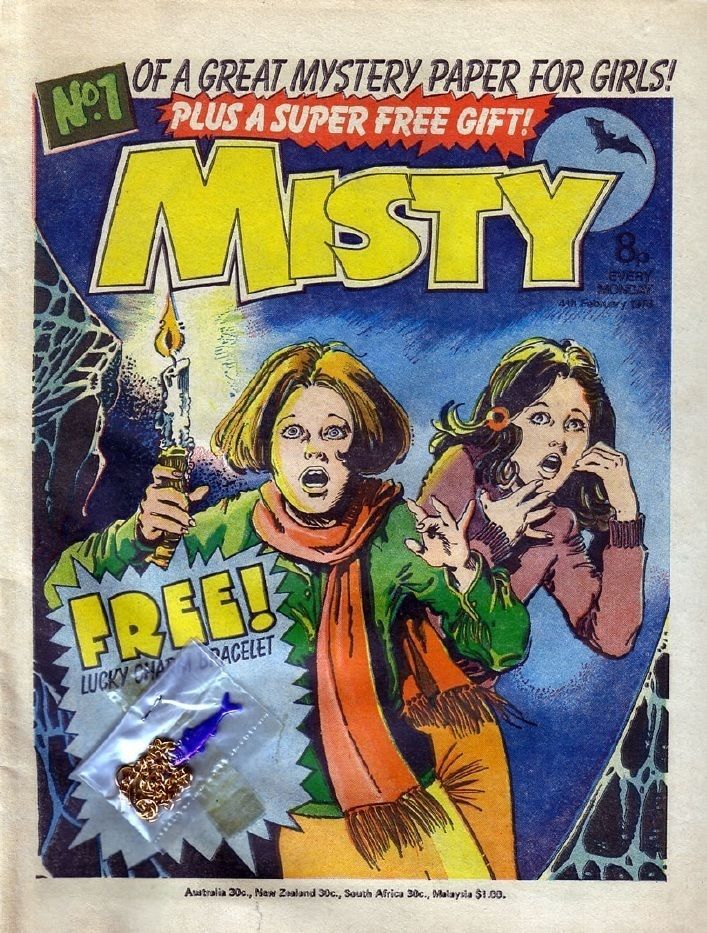
Misty Comic Issue 1, complete with free gift
Gothic for Girls is not a coffee table book. It is a remarkable collection containing almost all available information on the Misty title (most of which was gathered by Julia) with a serious academic study of its contents and its place in the history of British Comics.
The book opens with a chapter long definition of what ‘Gothic’ fiction is. Not an easy task, for a genre that, as Julia notes, shifts as time goes on. But she does a convincing job of defining the genre as it was and is, and setting the parameters of what she is going to discuss.
She starts by setting the scene, giving an overview of the place of Misty in the wider context of British girls’ comics. This opening chapter may come as something of a surprise to some, as they get to grips with the academic style of referencing previous books and papers. But the story that is told is engaging and fascinating and any discomfort quickly fades away.
The next chapters are pure gold. ‘Anonymous Authors’ and ‘Astonishing Artists’, compiles almost every detail available on the people who created Misty.
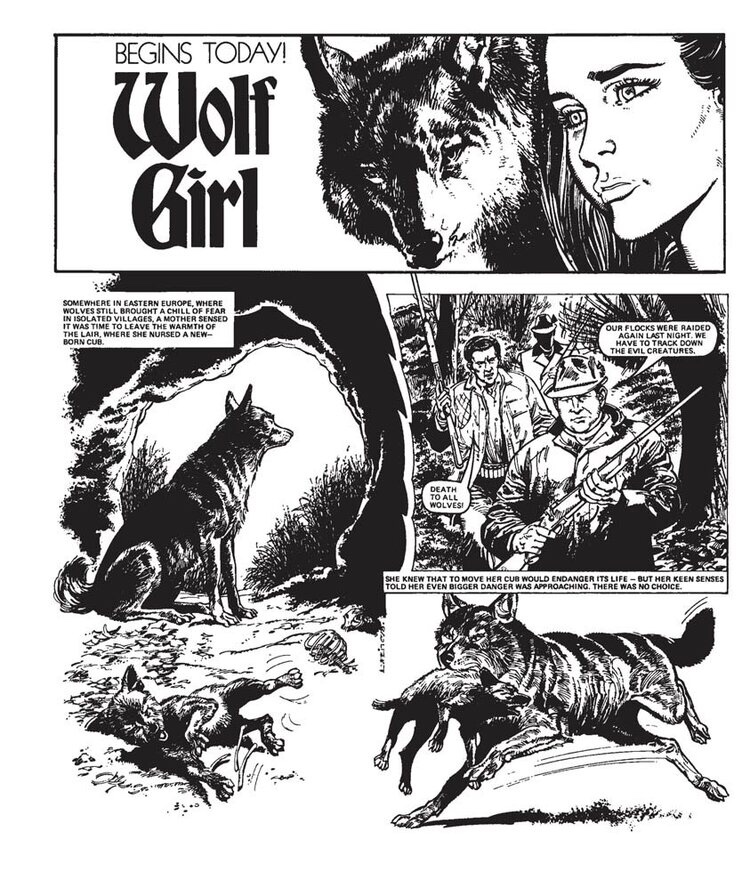
Misty: The Wolf Girl, collected in Misty Volume 3: Wolf Girl & Other Stories
Much of this information would have been lost, had it not been for the meticulous research and tenacity of Julia, who also owes a vast debt to David Roach’s identification of the artists who worked on the comic.
Much of Julia’s additional research comes from woefully inadequate and mistreated company records, but the most interesting material comes from interviews carried out with writers and artists by Julia herself.
Later, she provides a detailed analysis of the contents of the title, classifying the themes and plot devices used and providing a fascinating breakdown and discussion of the types of lead characters, and their eventual fates.
As the book goes on, we have detailed discussions of the artwork and story themes seen in Misty. How they grew out of, yet differed from the comics that came before. There are chapters on the wider influences on Misty from other mediums. Plus the role of ‘Misty’ herself, the host of the comic, and on the importance of many of the stories as metaphors for the experience of teenage girls as they grew towards adulthood.
Julia’s examination of the comic goes beyond its mere contents, she looks at the symbolism of the storylines and artwork, how they fit into and perhaps define a sub-genre of fiction which she has called, Gothic for Girls and why Misty in particular, is so well-remembered by so many readers.
I know from experience that any conversation with women, of a particular age, who hear I am interested in comics will either result in a quick change of subject, or, involve a discussion of ‘this one comic I really liked’ which usually turns out to be Misty.
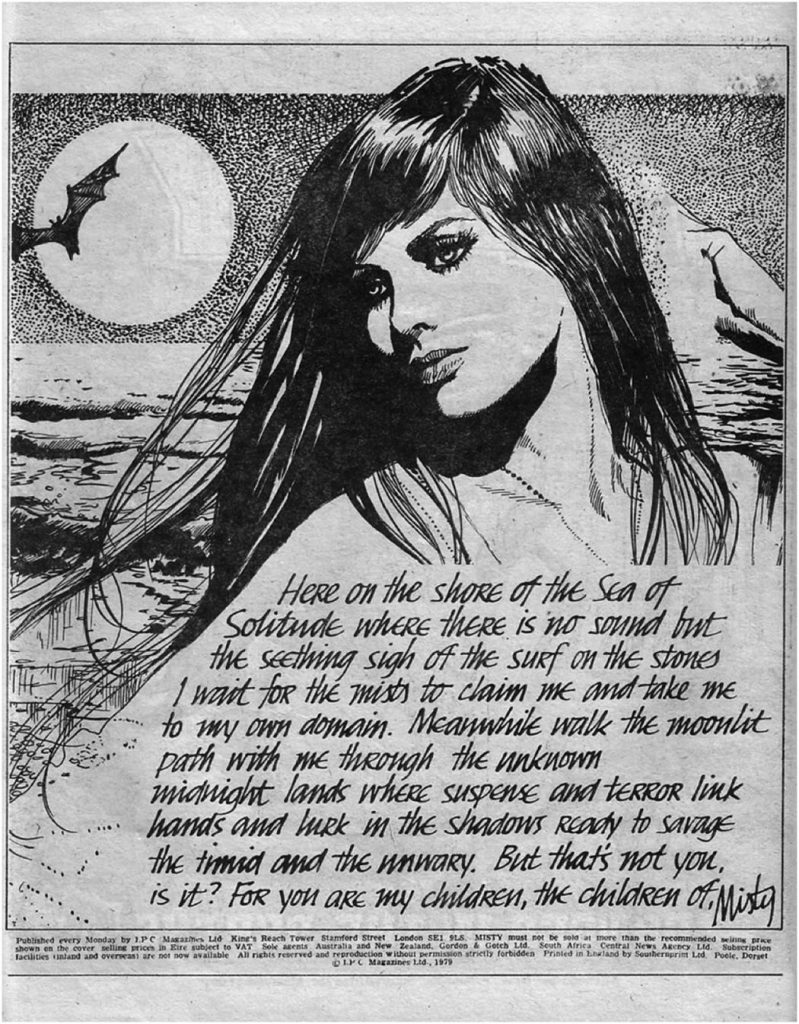
Misty’s spectral host
Gothic for Girls sets a new standard for the academic analysis of British comics. Julia has, by collecting documents and interviewing writers, artists and editors, gathered and saved information on the comics industry that was in grave danger of being lost and she has done it in the area of comics history that was most likely to be forgotten.
As Julia herself notes, there are very few books on girls’ comics. It’s an area of research that has been all but ignored. And yet a look through the comics of the 1970s and 80s show that in many cases girls’ titles had better artwork and were better written that the boys comics that are more often remembered. With Gothic for Girls, Julia has begun to put this right.
As with any academic work, it leaves the reader asking more questions. For myself, I was left wondering if there had been any cross-pollination between Misty and the Warren titles, Eerie and Creepy and Vampirella that may have had some Spanish artists in common. But that is a discussion for another day, and perhaps another book.
Peter Duncan
• Gothic for Girls: Misty and British Comics is available from the Eurospan Bookstore (20% discount available quoting MISTY20, or from AmazonUK here (Affiliate Link)
• Read an interview with Julia Round on SciFi Pulse, with Nicholas Yanes
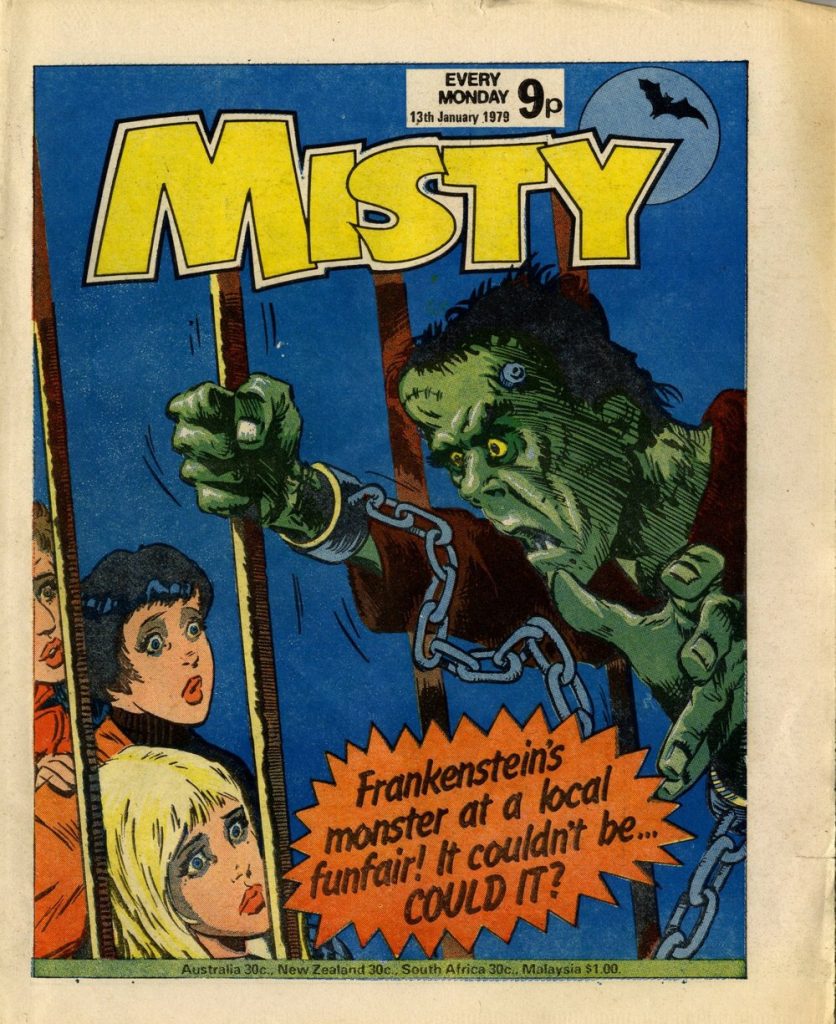
• Read Julia Round’s three-part feature “Misty and the Horrible History of British Comics” on Henry Jenkins site here, here and here
Julia Round is a Principal Lecturer at Bournemouth University, co-editor of Studies in Comics journal (Intellect) and the book series Encapsulations (University of Nebraska Press), and co-organiser of the annual International Graphic Novel and Comics Conference.
Much of her supporting research is available open access at www.juliaround.com, including interviews, articles, extracts, and a searchable database of all the Misty stories, with creator and publication details where known.
Her research examines the intersections of Gothic, comics and children’s literature. Her books include Gothic for Girls: Misty and British Comics (2019), Gothic in Comics and Graphic Novels: A Critical Approach (2014), and the co-edited collection Real Lives Celebrity Stories.
Peter Duncan is the editor of Sector 13, Belfast’s 2000AD fanzine and of Splank! He is also the writer of Cthulhu Kids. You can find details of his comics work at his website Box of Rain, and details of a collaboration with Julia Round
Peter Duncan is editor of Sector 13, Belfast’s 2000AD fanzine and Splank! – an anthology of strips inspired by the Odhams titles, Wham!, Smash! and Pow! He’s also writer of Cthulhu Kids. Full details of his comics activities can be found at www.boxofrainmag.co.uk
Categories: Books, downthetubes Comics News, downthetubes News, Features, Other Worlds, Reviews
 New Eagle Times magazine explores 1950s reader book picks, and more
New Eagle Times magazine explores 1950s reader book picks, and more  First “Carol Day” collection, “Lance Hallam” now available
First “Carol Day” collection, “Lance Hallam” now available  A British Science Fiction Catch Up with Philip Harbottle: Tales of Wonder, Golden Amazon and much more
A British Science Fiction Catch Up with Philip Harbottle: Tales of Wonder, Golden Amazon and much more  In Review: Comic Papers Between The Wars Books One and Two by Alan Clark
In Review: Comic Papers Between The Wars Books One and Two by Alan Clark